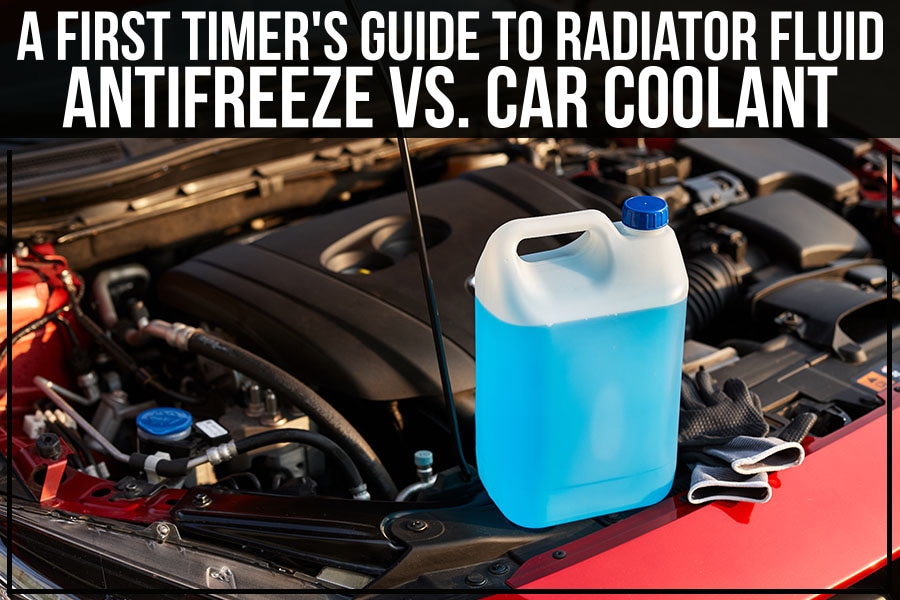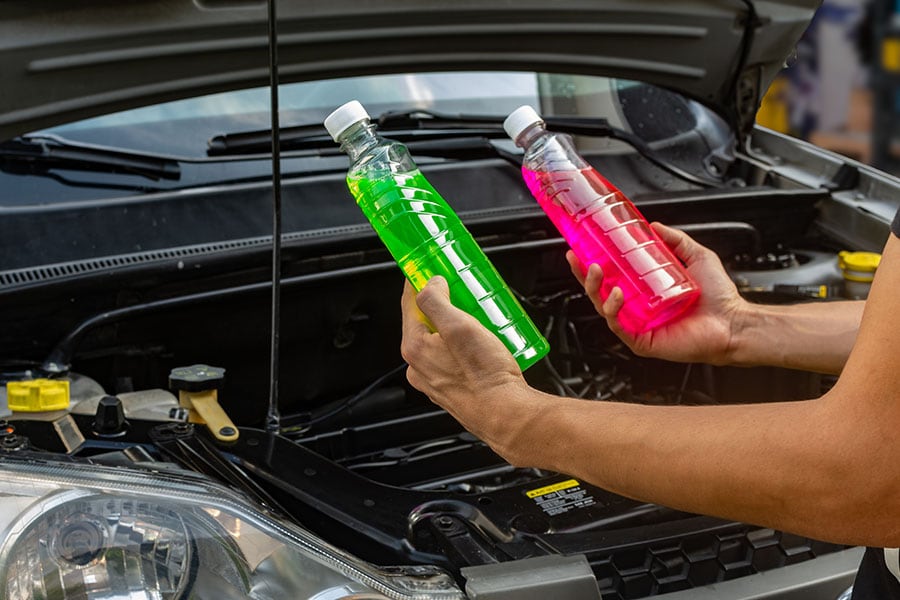
Key Takeaway:
· Radiator fluid is vital for preventing your car engine from overheating.
· Antifreeze is a type of fluid that helps lower water's freezing point. At the same time, car coolant also raises the boiling point.
· Both are important in hot and cold weather.
· Check your owner's manual to see what type of radiator you need.
The absolute bliss of your car running smoothly doesn't last forever. Sooner or later, you will have to open the hood and peek at the engine. Under the radiator cap, you will find a greenish or bright yellow liquid. That, my friend, is your car's radiator fluid, also called antifreeze or coolant.
Without this, your car would overheat within minutes of starting the engine on a hot day. So, it's essential to be vigilant about the level and condition of your radiator fluid and top it up or replace it as required.
The Function of Radiator Fluid
There are primarily two functions that your car antifreeze or coolant serves:
The fluid decreases the freezing point of water and raises the boiling point. In other words, it helps your car run smoothly in hot and cold weather conditions. In addition, most radiator fluids also contain corrosion inhibitors that protect against rust and other forms of degradation.
Over time, however, the chemicals in your radiator fluid can break down, so it's crucial to have it checked frequently and replaced as needed.

The Difference Between Car Coolant and Antifreeze
Car Antifreeze
Compounds such as ethylene glycol or propylene glycol comprise your car's antifreeze. These potent chemicals mainly surfaced to save engines from freezing in severely cold weather. Alcoholic compounds have a higher freezing point and can, therefore, keep your radiator fluid from freezing when the temperature outside plummets.
While it's essential to have these freeze-preventing chemicals in your radiator fluid, too many of them can cause corrosion. That's why most car antifreeze also contains inhibitors that help protect against rust and other forms of degradation.
Car Coolant
You mix fifty percent water in your antifreeze and have your car coolant. It is also a combination of chemicals but not as strong as antifreeze. The water in the coolant can help dissipate the heat from your engine, preventing it from overheating. It does this by boiling at a lower temperature and evaporating faster than plain water.
Most car coolant is green but can also be orange, yellow, or pink. It all depends on the manufacturer. Organic versions of car coolant are biodegradable and don't contain as many harmful chemicals.
What's the Right Mixture for My Car?
The ideal mixture of radiator fluid for your car will depend on your vehicle and the climate where you live.
If you live in a zone with very cold winters, you'll want to use a coolant with a higher antifreeze concentration. This will keep your engine from freezing when the temperature dips.
You'll want to use a coolant with a higher water concentration in hot climates, such as in Four Corners, FL. But as we always suggest, ask an expert to be sure.
If you're ever in doubt, it's always better to avoid using too much antifreeze rather than not enough. That's because if the coolant frees in the engine, it can crack and cause severe damage.
How Do I Check My Radiator Fluid Level?
Technically you will need to open the hood of your car, locate the radiator cap (it will have a picture of a radiator on it), and then check the fluid level. However, if you don't feel comfortable doing this, you can always take your car to a mechanic, and they will give you the service your vehicle deserves.
Dangers of Changing Radiator Fluid
1. Overheating
One of the dangers of changing radiator fluid is that it can cause the engine to overheat if not done right.
2. Damage to the Radiator
Another danger of changing radiator fluid is that it can damage the radiator. If the radiator is not correctly flushed before the new fluid is added, the contaminants in the old fluid can damage the radiator. Additionally, if too much new fluid is added to the system, it can cause the radiator to leak.
3. Damage to the engine
If you don't change your radiator fluid properly, it can damage your engine. The coolant system is designed to constantly keep a specific amount of coolant in the engine. Adding too much or too little coolant removes this delicate balance and permanently harms the engine.
4. Incomplete Flush
Not flushing the radiator before adding new fluid can cause clogs and other issues down the road. The old and new fluids will mix, creating knots or tangles that can reduce the cooling efficiency. Furthermore, not thoroughly flushing the system leaves contaminants behind, which causes problems with the coolant over time.
5. Incorrect Type of Fluid
Different types of engines require different types and proportions of coolant. If the inaccurate type or amount is used, it can cause overheating or other issues.
How to Safely Add Radiator Fluid
1. Check your owner's manual.
The first phase is to check your owner's manual. Every car is different, and some require a specific type or brand of radiator fluid. Be sure to use the fluid that is recommended for your vehicle.
2. Find the radiator cap.
The next step is to find the radiator cap. The radiator cap is usually located on the top of the radiator, and it may have a picture of a radiator on it. Once you find the radiator cap, unscrew it and set it aside.
3. Locate the overflow tank.
The third step is to locate the overflow tank. The overflow tank is usually found next to the radiator and has a picture of a water pump.
4. Add car coolant to the overflow tank.
Now you can begin adding car coolant to the overflow tank. Pour slowly so that you do not overfill the tank. Once the radiator fluid reaches the "full" line on the overflow tank, stop pouring.
5. Replace the caps on the radiator and overflow tank.
Once you have finished adding radiator fluid, replace the caps on the radiator and overflow tank. Screw them on tightly so that they are secure. You are now good to go!
Ending Note:
If you notice your vehicle heating excessively or if the radiator fluid is leaking, it is best to take it to a mechanic. Do not attempt to fix these problems yourself, as you could cause further damage to your car. If you need expert help, Mercedes Benz of South Orlando, serving Four Corners, FL, can help. We are the best Mercedes dealership in the region and can help you with the top-notch car service you will not find anywhere else.
 AdChoices
AdChoices